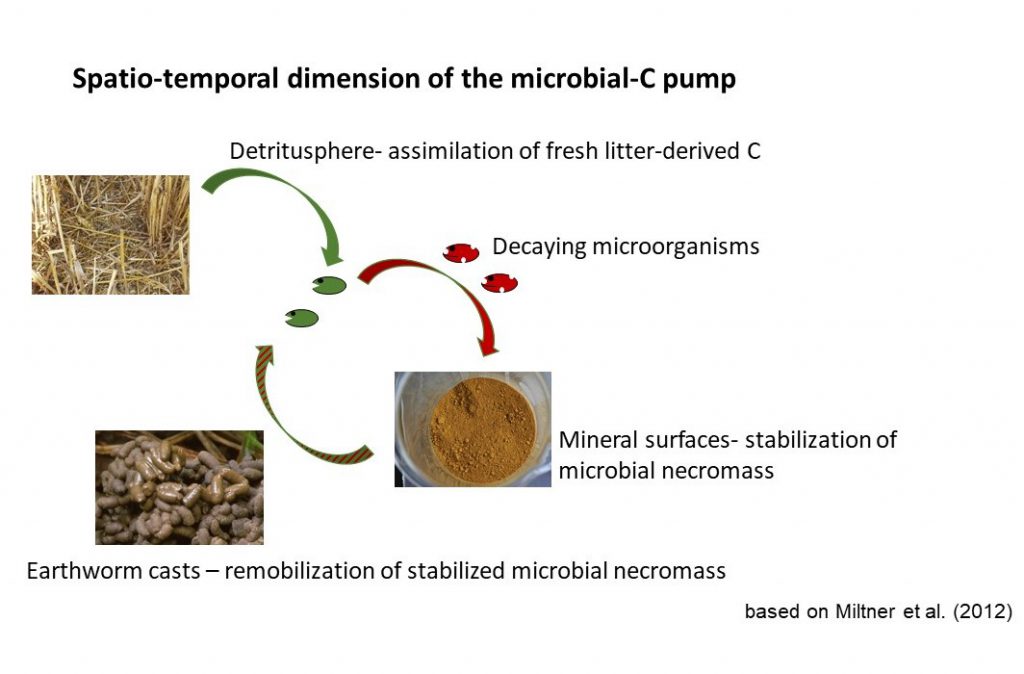Mineralization, stabilization, and re-mobilization of organic substances in microhabitats – the role of microorganisms in carbon and energy flows

The role of soil microorganisms in SOC formation and stabilization can be considered as a stepwise process, consisting of initial utilization of fresh plant-derived C, stabilization of cell wall compounds by, e.g., sorption to mineral surfaces after cell death, and microbial recycling after re-mobilization. These processes are not equally distributed within soils, but instead are concentrated in different microhabitats. Consequently, studying C fluxes and microbial dynamics in these highly dynamic habitats is a promising approach to clarify the microbial role in soil C cycling. The challenge for a complete understanding is to link C and microbial dynamics to energy fluxes and thermodynamic principles, which are important for explaining emerging microbial functions and communities in soil. We tackle this challenge by concurrent quantification of C and energy fluxes as well as by characterization of microbial dynamics in three specific microhabitats: 1) the detritusphere as habitat, where initial microbial utilization of fresh plant litter takes place; 2) mineral surfaces as habitat, where C is either directly sorbed or stabilized after processing by soil microorganisms; and 3) earthworm casts as the end product of rearranged soil particles, re-mobilized nutrients and C compounds, selecting for specific microbial communities during gut passage and aging of cast aggregates. Using these approaches, we hope to understand how microhabitats with specific characteristics control the microbial role in C stabilization (‘entombing effect’) and how linking C cycling to energy fluxes and thermodynamic principles can improve our understanding of microbial C stabilization in soils.
Link to English scientific abstract
Link to German scientific abstract